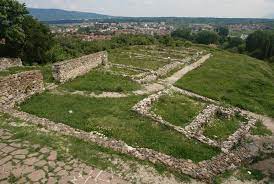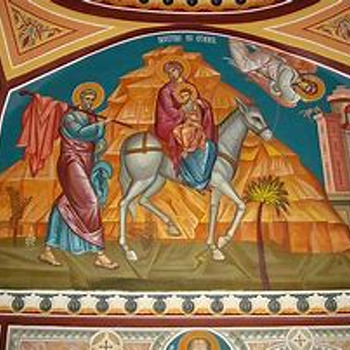Fortress Castra ad Montanesium
Overview
The fortress near Montana - Castra ad Montanesium, is located at the northwestern end of the city, on the hill Kaleto.
The hill is the subject of many archaeological studies that reveal valuable information about the history of the city of Montana.
The name of the city was given by the ancient Romans and probably comes from the word Mons - mountain, but the village itself dates back to prehistoric times.
The first inhabitants of the hill lived during the Stone Age. During this period of history, people made an important transition from nomadic hunters to a more sedentary lifestyle associated with cultivating the land and building permanent settlements. The area, later called Montana, was chosen as a suitable place to live by the ancients because of the fertile soils and the possibility of protection. This is shown by the dwellings discovered during excavations from this period.
Later the place was inhabited by the ancient Thracians. The Thracian tribe Tribals inhabited the hill until about the first century BC. They built a fortress to protect themselves from invaders. There are stone walls more than a meter wide.
The Romans settled in the area at the end of the 1st century AD, attracted by the rich deposits of ore and gold along the Ogosta River. They conquered the Thracian fortress and used it for their own needs. During this period, Montana became a city - the center of the province of Lower Moesia, which is permanently inhabited by military units.
During the Roman Empire, the city flourished. Roads connecting and maintaining Montana with the rest of the empire were built and maintained. Apart from ore mining and gold mining, the main livelihoods at that time were agriculture and handicrafts.
In the third century AD the city is the site of raids by Gothic tribes. It was against them that the fortress of Castra ad Montanesium was built, on the foundations of the ancient Thracian fortress on the hill of Kaleto. Barracks, a basilica, and thick fortress walls were built to withstand the attacks of the invaders.
The Roman city together with the fortress was destroyed at the end of VI by an invasion of Avars and Slavs. Later, the Slavs built their own settlement on the ruins, which they named Kutlovitsa. One of the barracks buildings left by the Roman fortress, they turned into their pagan sanctuary, preserved to this day. It paid homage to either the god Perun or Dazhdbog, the god of fertility, and perhaps both deities at the same time. The sanctuary lasted until the adoption of Christianity in the Bulgarian state (IX century).
Today the fortress is partially restored. The modern city of Montana is located in the valley, thus leaving the possibility of Kaleto Hill to be preserved undeveloped as a kind of monument of ancient history. Each of the civilizations that inhabited this place has left a piece of its culture. The fortress is an integral part of the city, so it is no coincidence that it is depicted on its coat of arms together with the patron goddess Diana.
The fortress is freely accessible. More detailed information and a guided tour can be obtained at the Montana Historical Museum.
Recommended
- Regional History Museum


 Bulgarian
Bulgarian Romanian
Romanian


